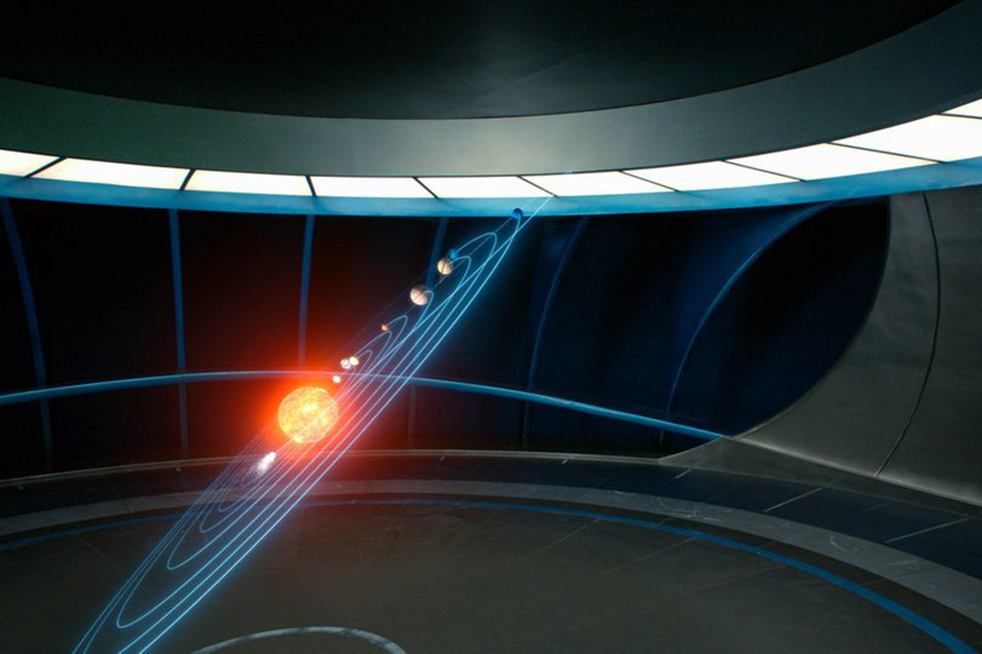Cosmos was the first ever documentary to air on commercial networks, meaning that it will reach more than the typical niche science crowd.
The pilot episode “Standing Up in the Milky Way” aired simultaneously on 10 Fox networks including National Geographic. Globally, Cosmos premiered on 220 channels, 181 countries, and 45 languages, the largest television show premiere in history.
“From the infinitesimal to the infinite,” Cosmos: A Spacetime Odyssey takes viewers through time and space from the distant and remarkable past, through the intricate present and hoping for a magnificent future.
With Cosmos, Neil deGrasse Tyson aims to bring science to everyone—young or old, religious or not. Cosmos is a well-produced show that could entertain even a small child just by watching the “Ship of Imagination” fly through Jupiter’s Red Spot and past the Andromeda galaxy.
Tyson is an astrophysicist and a well-known science communicator, and he has been giving lectures since he was 15. Tyson is the Director of the Hayden Planetarium and is a Research Associate at the American Museum of Natural History.
Tyson initiates Cosmos by acknowledging Carl Sagan’s Cosmos: A Personal Voyage, the first science documentary that sought to explain science in layman’s terms. Tyson reduces the science behind the cosmos to a few concepts: test ideas through experiments or observations, only building on those that pass, follow the evidence wherever it may lead and question everything.
Tyson jumps in his “Ship of Imagination” to establish Earth’s “Cosmic Address.” The ship journeys from Earth throughout the Solar System and the Milky Way Galaxy, then to the Local Group, through the Virgo Supercluster and finally to the edge of the Observable Universe.
The Observable Universe is what can be seen by way of telescopes (on and off the planet). Past the outskirts of the Observable Universe lies what we cannot see, from where light has yet to reach the Earth. To further broaden the horizons of the Observable Universe will take millions of years.
After Tyson skims the threshold of the Observable Universe, he ushers the ship back to Earth—to Italy, to share the tale of a man by the name of Giordano Bruno. Bruno took Copernicus’ heliocentric theory and expanded the boundaries of the universe even further using only his imagination and faith.
An animated short presents Bruno’s life beginning from when he reads about the boundless universe in Lucretius’s De Rerum Natura (Latin for: On the Nature of Things), to his burning at the stake for his outspoken beliefs.
Bruno’s story illustrates that scientific discovery can be analogous with religion not opposed to it. Tyson also mentions when Moses, Buddha, Jesus, and Mohammed appear in the “Cosmic Calendar”—a calendar year beginning at the Big Bang, up to the last few seconds where humans evolved—creating a world, not only full of wondrous stars and planets, but with science and religion coexisting in peace.
Cosmos has an amazing team behind the scenes; it was created by Ann Druyan and Steve Soter who both helped Sagan write the original Cosmos. Seth MacFarlane is the executive producer, and Cosmos even has Alan Silvestri (The Avengers and Back to the Future) as its Musical Composer. The pilot also included an introduction by President Obama.
Neil deGrasse Tyson will be speaking at Georgia Tech on Tuesday, April 1st at the Ferst Center for the Arts. Do not worry that is not an April fools joke.
